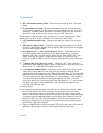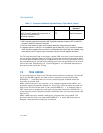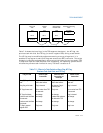
7-14 Vol. 3
TASK MANAGEMENT
10. If the task switch was initiated with a CALL instruction, JMP instruction, an
exception, or an interrupt, the processor sets the busy (B) flag in the new task’s
TSS descriptor; if initiated with an IRET instruction, the busy (B) flag is left set.
11. Loads the task register with the segment selector and descriptor for the new
task's TSS.
12. The TSS state is loaded into the processor. This includes the LDTR register, the
PDBR (control register CR3), the EFLAGS registers, the EIP register, the general-
purpose registers, and the segment selectors. Note that a fault during the load of
this state may corrupt architectural state.
13. The descriptors associated with the segment selectors are loaded and qualified.
Any errors associated with this loading and qualification occur in the context of
the new task.
NOTES
If all checks and saves have been carried out successfully, the
processor commits to the task switch. If an unrecoverable error
occurs in steps 1 through 11, the processor does not complete the
task switch and insures that the processor is returned to its state
prior to the execution of the instruction that initiated the task switch.
If an unrecoverable error occurs in step 12, architectural state may
be corrupted, but an attempt will be made to handle the error in the
prior execution environment. If an unrecoverable error occurs after
the commit point (in step 13), the processor completes the task
switch (without performing additional access and segment avail
-
ability checks) and generates the appropriate exception prior to
beginning execution of the new task.
If exceptions occur after the commit point, the exception handler
must finish the task switch itself before allowing the processor to
begin executing the new task. See
Chapter 6, “Interrupt 10—Invalid
TSS Exception (#TS),” for more information about the affect of
exceptions on a task when they occur after the commit point of a task
switch.
14. Begins executing the new task. (To an exception handler, the first instruction of
the new task appears not to have been executed.)
The state of the currently executing task is always saved when a successful task
switch occurs. If the task is resumed, execution starts with the instruction pointed to
by the saved EIP value, and the registers are restored to the values they held when
the task was suspended.
When switching tasks, the privilege level of the new task does not inherit its privilege
level from the suspended task. The new task begins executing at the privilege level
specified in the CPL field of the CS register, which is loaded from the TSS. Because
tasks are isolated by their separate address spaces and TSSs and because privilege


















